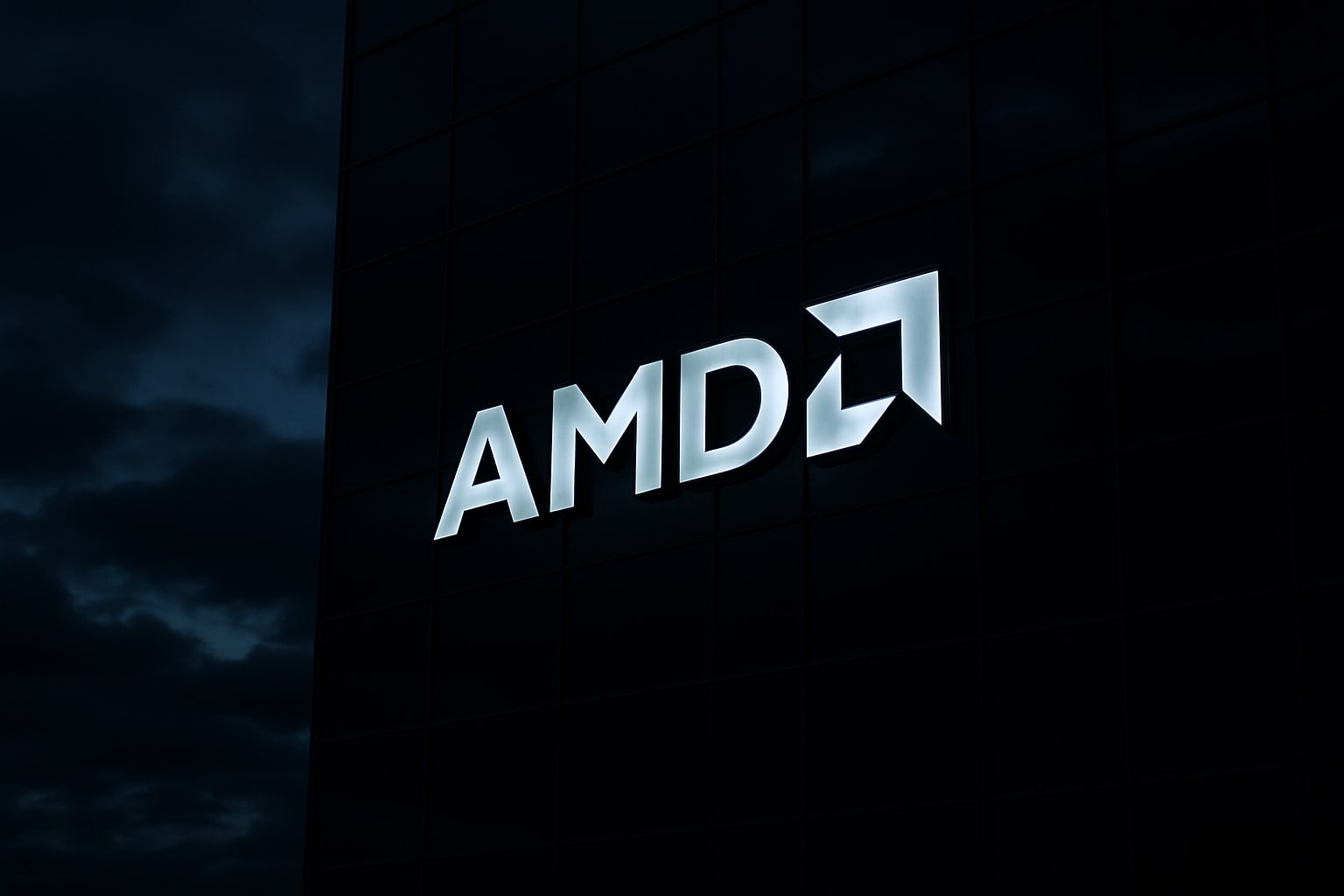
AMD Stock Price Forecast - AMD Surges Toward $300 as, Multi-Billion AI Deals Ignite Next Growth Wave
With Q3 revenue up 36% to $9.25B and net income soaring 61%, AMD cements its AI leadership through Helios systems, OpenAI’s 6 GW contract, and Oracle’s 50K-GPU order | That's TradingNEWS
NASDAQ:AMD — Advanced Micro Devices Accelerates Toward AI Dominance as ROCm 7, Helios, and Mega AI Deals Transform Its Growth Horizon
Advanced Micro Devices Inc. (NASDAQ:AMD) closed at $233.54, down 1.75%, after briefly touching $235.93 in after-hours trading, giving the company a $380.2 billion market capitalization. The Santa Clara-based semiconductor powerhouse has entered a new expansion phase, driven by its aggressive positioning in artificial intelligence, data center hardware, and software ecosystems. With Q3’25 revenue soaring 35.6% year-over-year to $9.25 billion and net income up 61.2% to $1.24 billion, AMD’s results signal a strategic evolution far beyond chipmaking — it’s now building a full-scale AI infrastructure stack.
Reinforcing Market Share Leadership: NASDAQ:AMD Expands Data Center Dominance
The Data Center division remains the company’s revenue anchor, contributing 47% of total sales or roughly $4.3 billion in Q3’25, up 34% sequentially and 22% YoY. AMD continues to gain share from Intel in the CPU server market, with its EPYC platform driving steady growth. While the company avoided disclosing precise GPU contributions, internal estimates suggest data center GPU sales are running near a $6 billion annualized rate. CFO Jean Hu attributed the solid expansion to both CPU and GPU strength, adding that “server is a little bit better,” signaling that the server business continues to outperform AI GPU growth at this stage. The segment’s operating margin, while pressured by high R&D and product ramp costs, underscores AMD’s long-term strategy of building dollar-based gross profit instead of short-term percentage margin optimization.
ROCm 7 and Helios: The Software Leap That Redefines NASDAQ:AMD’s AI Credibility
AMD’s most critical pivot lies in ROCm 7, its open-source AI software platform that competes directly with NVIDIA’s CUDA ecosystem. ROCm 7 delivers up to 4.6x faster inference and 3x faster training performance versus ROCm 6, narrowing the gap with CUDA in key AI workloads. CEO Lisa Su emphasized that “day-zero support for the newest models and frameworks” is now standard, reflecting AMD’s push toward full AI stack compatibility. The upcoming Helios rack-scale system, scheduled for rollout in 2026, aims to transform AMD from a component supplier into a complete systems provider — offering GPU, CPU, networking, and liquid cooling in an integrated solution similar to NVIDIA’s DGX architecture. This transition positions AMD to compete not only in chip performance but in full data center design and scalability.
Major AI Contracts Validate AMD’s Growth Trajectory
The announcement of two monumental partnerships marked a watershed moment for AMD’s credibility in the AI infrastructure market. Oracle (NYSE:ORCL) will deploy 50,000 MI450-series GPUs starting in 2H26, while OpenAI has committed to a 6 GW data center build-out, with the first 1 GW phase launching in late 2026. Analysts estimate each gigawatt of deployment could generate roughly $15 billion in revenue and $1 in EPS, implying potential upside far beyond current Street models. Even under conservative assumptions, AMD’s 2026 GPU revenue could surpass $13.1 billion, suggesting a re-rating of its valuation metrics is imminent once deliveries begin. These agreements provide direct validation of AMD’s technology scalability and signal a structural shift from hype to tangible revenue generation.
Client and Gaming Segments Add Firepower to NASDAQ:AMD’s Profit Engine
AMD’s Client segment generated $2.75 billion in Q3’25, rising 46.2% year-over-year and 10% quarter-over-quarter, as demand for Ryzen CPUs outperformed expectations amid a refresh cycle. Meanwhile, Gaming revenue surged 181% YoY to $1.30 billion, aided by seasonal strength and next-gen console demand. Together, the two segments achieved a combined operating margin of 21%, nearly double the 12% recorded in the prior year. The gaming contribution remains cyclical, but it bolsters Q4 guidance, with revenue projected to hit $9.6 billion, beating the Street’s $9.2 billion consensus. Seasonality will taper in H1’26, yet AMD’s long-term position in both gaming and client computing remains secure, supported by its dominance in console silicon and PC processors.
Heavy R&D Spending Positions AMD for Sustained Technological Leadership
In Q3’25, R&D expenses totaled $2.14 billion, equating to 23.3% of total revenue, roughly on par with NVIDIA’s 2021–2023 average of 22.5%. While this elevated spending compresses near-term operating margins, it underscores AMD’s aggressive reinvestment in AI, software, and server architecture. The company’s operating margin improved to 14%, up from 11% in Q2’24, reflecting scalability gains. Free cash flow jumped 139.9% to $1.56 billion, with cash from operations up 243.8% YoY to $2.16 billion, strengthening AMD’s liquidity profile. Total assets rose 10.4% YoY to $76.89 billion, and cash reserves climbed to $7.24 billion, up 59.4% year-over-year. This war chest enables AMD to expand manufacturing collaborations and fund next-gen chip production at advanced process nodes.
Read More
-
JEPQ ETF Holds $58.82 as Fund Flows Cool and Nasdaq Valuations Stretch
06.12.2025 · TradingNEWS ArchiveStocks
-
XRP ETFs Cross $1 Billion AUM as XRPI and XRPR Lead Institutional Wave
06.12.2025 · TradingNEWS ArchiveCrypto
-
Natural Gas Price Breakout: NG=F Soars to $5.50 on Cold U.S. Weather & LNG Export Boom
06.12.2025 · TradingNEWS ArchiveCommodities
-
USD/JPY Price Forecast - Dollar to yen Slides to 155.60, BOJ Hike Reprice Global Currency Markets
06.12.2025 · TradingNEWS ArchiveForex
Valuation Premium Reflects AI Anticipation but Leaves Room for Upside
At 115× trailing earnings and 59× forward P/E, AMD trades at a steep premium to the semiconductor sector average of 24.6×. However, this multiple captures the company’s anticipated AI-driven expansion rather than its trailing fundamentals. The PEG ratio appears elevated, but revenue growth of 31.8% YoY and net income expansion of 61% suggest earnings leverage is just beginning. AMD’s price-to-book of 6.37× reflects high investor confidence in its tangible asset productivity and intellectual property value. The market is pricing in execution on its AI roadmap, including Helios, MI450, and ROCm ecosystem expansion. Should AMD successfully monetize its OpenAI and Oracle contracts, earnings per share could climb materially by late 2026.
Strategic Risks and Competitive Landscape for NASDAQ:AMD
Execution risk remains AMD’s primary concern. The company must demonstrate it can scale production of MI450 GPUs and deliver full rack systems on time, a challenge given ongoing global supply chain constraints. Competitively, NVIDIA (NASDAQ:NVDA) retains over 94% of the AI GPU market, dwarfing AMD’s 6% share. Nonetheless, ROCm 7’s compatibility progress and OpenAI’s adoption mark the first credible inroads against CUDA’s software moat. The ZT Systems acquisition enhances AMD’s hardware integration capabilities, helping to close the gap in rack-level engineering. Furthermore, AMD obtained U.S. Commerce Department approval to export MI308 GPUs to China, though no shipments have yet occurred, signaling potential upside if geopolitical restrictions ease.
Financial Forecast and Analyst Day Expectations
Management’s Q4’25 revenue guidance of $9.6 billion implies sustained momentum, with double-digit sequential growth in data center and stable performance across client and gaming segments. Gross margin is forecast at 54.5%, up 50 bps quarter-over-quarter. The upcoming Financial Analyst Day is expected to provide visibility on the MI450 ramp, updated $500 billion total addressable market by 2028, and potential capital allocation priorities. CEO Lisa Su reiterated that “our AI business is entering a new phase of growth and is on a clear trajectory toward tens of billions in annual revenue by 2027.” This forward-looking tone supports continued institutional accumulation of AMD shares despite near-term valuation headwinds.
Institutional and Insider Trends for NASDAQ:AMD
Institutional ownership remains robust, with funds such as Vanguard, BlackRock, and Fidelity maintaining heavy exposure amid AI infrastructure optimism. For detailed insider transaction history, see AMD insider transactions, which show minimal insider selling despite the stock’s 156% rally over the past six months. This retention pattern indicates internal confidence in AMD’s growth trajectory.
NASDAQ:AMD Technical Landscape and Price Levels
From a technical perspective, AMD stock has traded between $76.48 and $267.08 over the past 52 weeks. The short-term support lies near $224.60, aligning with the 50-day moving average, while resistance emerges around $240.00–$245.00, coinciding with its post-earnings recovery zone. The stock’s RSI sits near 54, reflecting neutral momentum after the recent 7% correction. Volume averaged 69.5 million shares, suggesting continued institutional rotation rather than retail-driven volatility. A sustained breakout above $247 could trigger a retest of $260–$265, whereas failure to hold $224 may lead to consolidation near $210.
Forward Outlook: NASDAQ:AMD Transitions from Potential to Proof
AMD’s evolution from a chipmaker into a full-stack AI systems provider is underway. Its MI450 accelerators, Helios rack-scale architecture, and ROCm 7 ecosystem collectively position it as the first credible alternative to NVIDIA’s dominance. The OpenAI and Oracle partnerships, valued at multi-billion-dollar commitments, provide revenue visibility well into 2027. AMD’s financial performance — from 61% profit growth to 140% FCF increase — highlights strong operational execution. Valuation remains demanding, but the market is rightly paying for leadership in the next phase of AI infrastructure.
Verdict: BUY — NASDAQ:AMD offers long-term upside potential toward $275–$300, supported by accelerating AI adoption, margin expansion, and transformative partnerships.
View real-time chart: NASDAQ:AMD Stock Chart


















